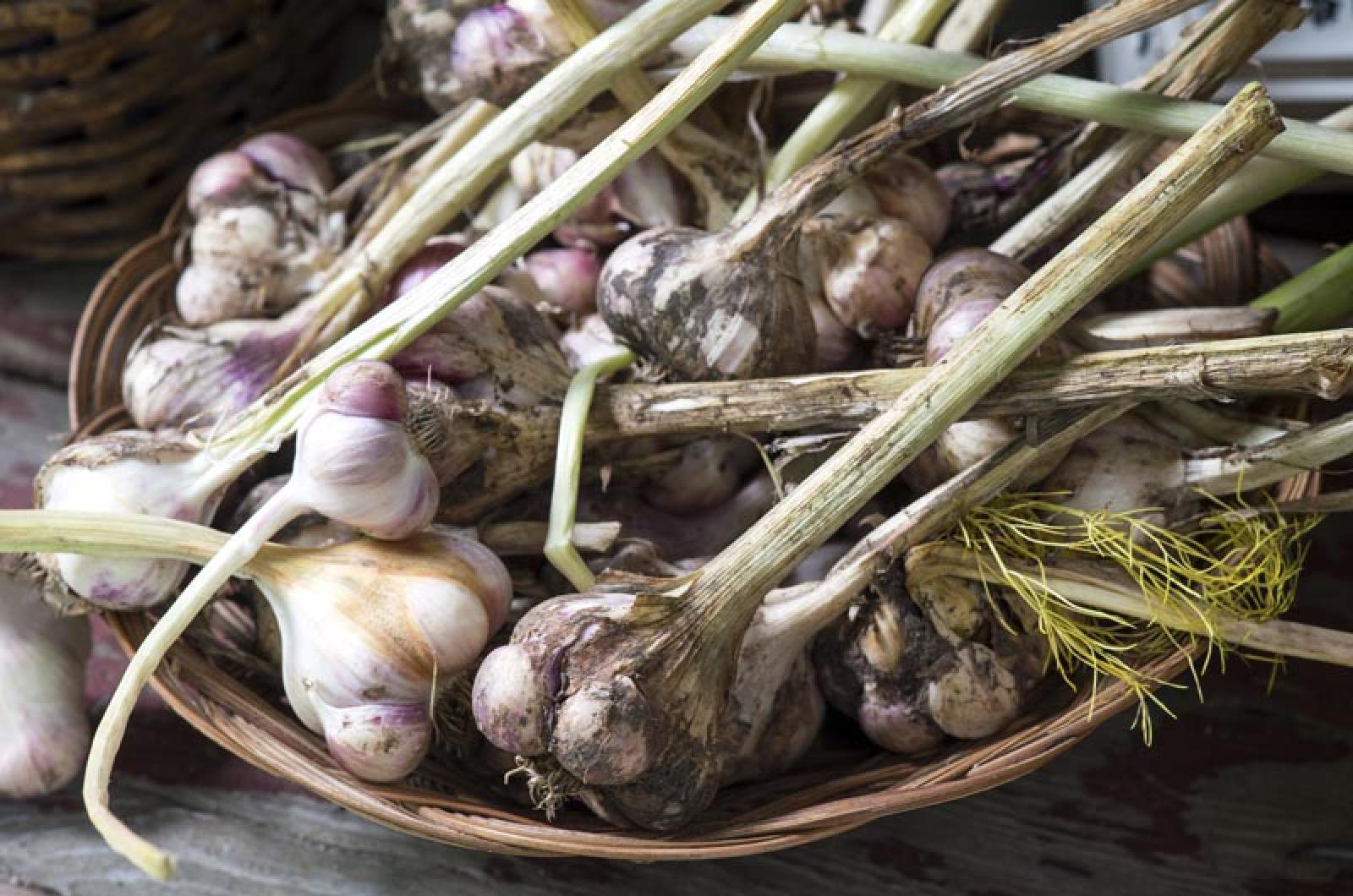My ambition this fall is to be part of the one per cent. It is not monetary riches that I desire; rather it is culinary wealth to which I aspire. Just less than one per cent of garlic consumed in the U.S. is grown in this country. Last week, I planted three bulbs, or about 28 cloves, of glorious garlic in hopes of joining that elite group of growers.
Much of the supply of commercial garlic hails from China, which produces 19 million tons or 79 per cent of the world’s output. Next are India, South Korea and Egypt, with the U.S. down the line in 10th place. Most of this country’s garlic is grown in Gilroy, Calif., which describes itself as the “garlic capital of the world.” Ah, American exaggeration.
In our part of the country, garlic can be planted in the fall and will be ready to harvest come summer. While there must be some folks that dislike this beauteous bulb, I love it. There are many that share my passion for garlic. Italian American author Felice Leonardo Buscaglia believed this plant divine, noting: “There are many miracles in the world to be celebrated and, for me, garlic is the most deserving.”
Mrs. W.G. Waters, cookbook author of the 1920s, took it a step further, extolling the cook as well as the ingredient: “Garlic used as it should be used is the soul, the divine essence, of cookery. The cook who can employ it successfully will be found to possess the delicacy of perceptions, the accuracy of judgment, and the dexterity of hand which go to the formation of a great artist.”
Stating what sounds like the obvious, journalist Sylvia Rubin insists, “The best thing to do with garlic of course, is to eat it.”
Tell that to my sister in law, who I’ve seen put single cloves in the ears of her children to cure ear and headaches. That remedy seemed crazy when I first saw her do it, but actually is one of the many healthy cures credited to garlic.
The Salerno Regiment of Health, a 12th-century medieval health text, explains this tradeoff: “since garlic then hath powers to save from death, bear with it though it makes unsavory breath.”
To combat the bad breath, drink milk with your garlicky dishes since a recent study showed that it could neutralize the odor. Make it full fat milk, since it is the fat that is doing the deodorizing.
Other healthy perks for which garlic is known include lowering blood cholesterol (and thus preventing heart disease), boosting immune systems, and acting as an anti-bacterial and anti-viral agent. Garlic was even employed during World Wars I and II as an antiseptic for preventing gangrene.
Garlic can also be seen as a force for good or against evil. It supposedly provides protection against demons, werewolves and vampires, imparts strengths and incites courage, fosters love and removes jealousy. On the flip side, Buddhist tradition insists that it stimulates aggression and is a detriment to meditation.
As with most things, we must take the good with the bad, and there is much more good in garlic. I concur with chef and culinary writer Louis Diat, who insisted: “Without garlic I simply would not care to live.”
And if you are not as confident in your cooking skills as Mr. Diat and don’t know how much garlic is enough, follow the lead of newscaster Morley Safer, who knew that “you can never have enough garlic. With enough garlic, you can eat The New York Times.”
Suzan Bellincampi is director of the Felix Neck Wildlife Sanctuary in Edgartown, and author of Martha’s Vineyard: A Field Guide to Island Nature.




Comments
Comment policy »